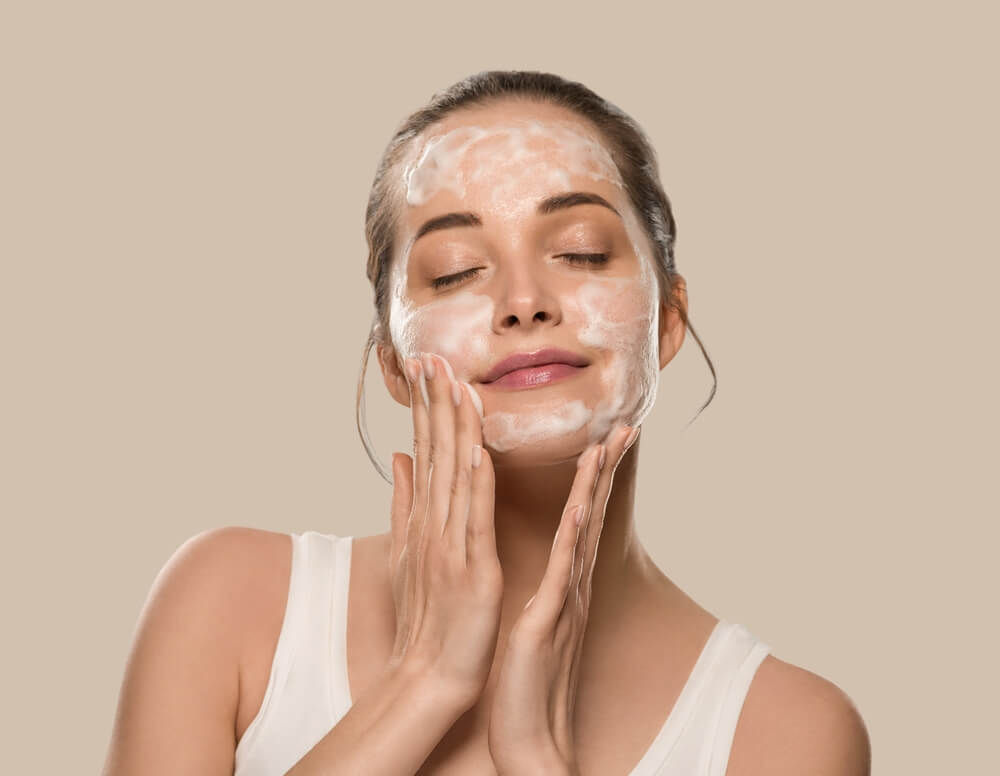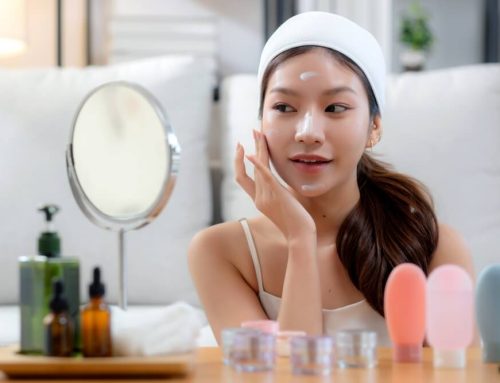Taking care of your skin is important for many reasons. It can help prevent breakouts, slow down signs of aging, and even boost your confidence. However, with so many skincare products and routines out there, it can be overwhelming to know where to start. In this ultimate guide, we will take you through the steps of building a skincare routine that works for you.
Determine Your Skin Type

1. Before starting any skincare routine, it’s important to know your skin type. This will help you select the right products that will work best for your skin. Generally, there are five different skin types: oily, dry, combination, normal, and sensitive.
Oily skin is characterized by excess sebum production, leading to shiny skin and the potential for clogged pores. Dry skin is characterized by a lack of sebum production, leading to tightness, flaking, and irritation. Combination skin is a mix of both oily and dry areas. Normal skin is neither oily nor dry, and has a balanced appearance. Sensitive skin is prone to redness, irritation, and allergic reactions.
Cleanse

2. Cleansing is the first step in any skincare routine. It helps to remove dirt, oil, and impurities from your skin. Cleansing should be done twice a day, in the morning and at night, to keep your skin clean and fresh.
When selecting a cleanser, it’s important to choose one that is appropriate for your skin type. For oily skin, a foaming or gel cleanser can help to remove excess oil. For dry skin, a creamy or oil-based cleanser can help to add moisture to the skin. If you have sensitive skin, look for a gentle, fragrance-free cleanser that won’t irritate your skin.
Tone

3. Toning is an optional step in your skincare routine, but it can help to balance your skin’s pH levels and remove any remaining dirt or makeup. Toners can also help to prepare your skin for the next steps in your routine.
There are several types of toners available, including those with hydrating, exfoliating, and brightening properties. Look for a toner that is appropriate for your skin type and concerns.
Treat

4. Treating your skin involves using targeted products to address specific skin concerns. This can include serums, spot treatments, and masks.
Serums are lightweight, highly concentrated products that are applied after toning and before moisturizing. They can help to hydrate the skin, reduce the appearance of fine lines and wrinkles, and brighten the complexion. Spot treatments are used to target specific areas of concern, such as acne or dark spots. Masks are used to deeply hydrate and nourish the skin.
When selecting treatment products, it’s important to choose products that are appropriate for your skin type and concerns.
Moisturize

5. Moisturizing is an important step in any skincare routine. It helps to hydrate the skin, protect it from environmental stressors, and maintain a healthy barrier.
When selecting a moisturizer, choose one that is appropriate for your skin type. For oily skin, a lightweight, oil-free moisturizer can help to prevent excess oil production. For dry skin, a rich, hydrating moisturizer can help to add moisture to the skin. Again, if you have sensitive skin, opt for fragrance-free.
Sun Protection

6. Sun protection is important for preventing skin damage and premature aging. It’s important to apply sunscreen daily, even on cloudy days or when indoors.
When selecting a sunscreen, look for one that is broad-spectrum and has an SPF of 30 or higher. If you have sensitive skin, look for a mineral-based sunscreen that is free of fragrances and other irritants.
Eye Care

7. The delicate skin around the eyes requires special care. Using an eye cream or serum can help to hydrate the skin, reduce the appearance of fine lines and wrinkles, and minimize puffiness and dark circles.
Weekly Treatments

8. In addition to your daily skincare routine, incorporating weekly treatments can help to boost the effectiveness of your routine. This can include exfoliating treatments, masks, and facial massages.
Exfoliating treatments can help to remove dead skin cells and promote cell turnover, resulting in a smoother, brighter complexion. Masks can help to deeply hydrate and nourish the skin. Facial massages can help to boost circulation and promote lymphatic drainage, resulting in a more youthful, radiant appearance.
Listen to Your Skin
9. As you build your skincare routine, it’s important to listen to your skin. If a product is causing irritation or breakouts, discontinue use and try a different product. Pay attention to how your skin feels and looks, and adjust your routine as needed.
Be Consistent
10. Consistency is key when it comes to skincare. Stick to your routine and give it time to work. It can take several weeks to see the full benefits of a new skincare routine.
Building a skincare routine can feel overwhelming, but it doesn’t have to be. By determining your skin type, selecting the right products, and being consistent, you can achieve skin that appears healthy and glowing. Remember to listen to your skin and adjust your routine as needed, and don’t forget the importance of sun protection and weekly treatments. With these tips, you’ll be on your way to the ultimate skincare routine!






Leave A Comment